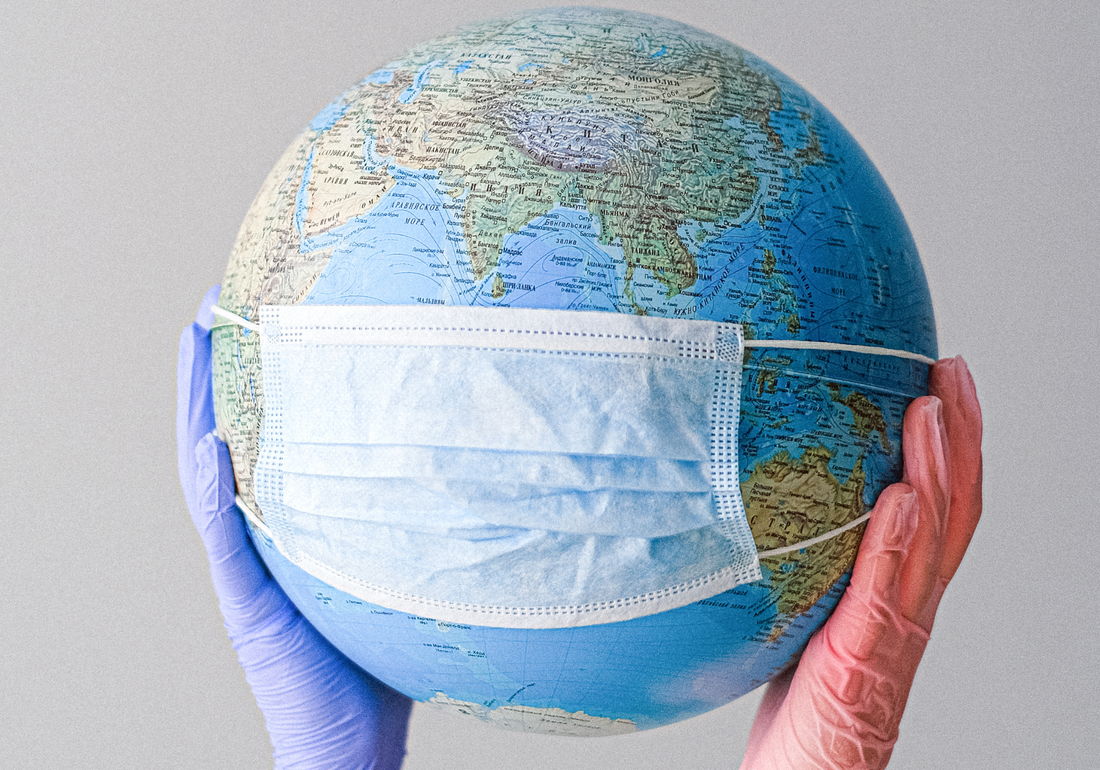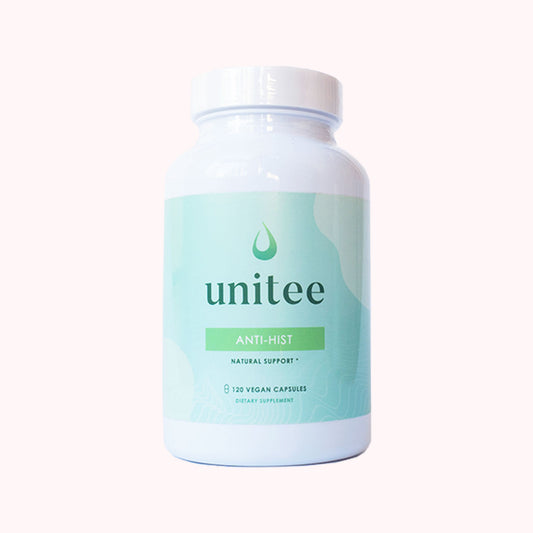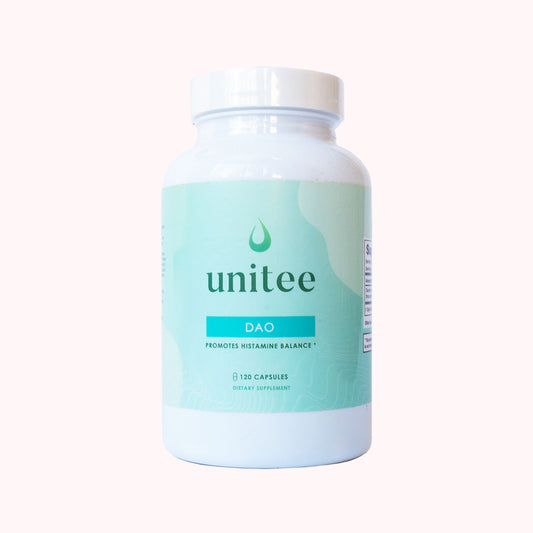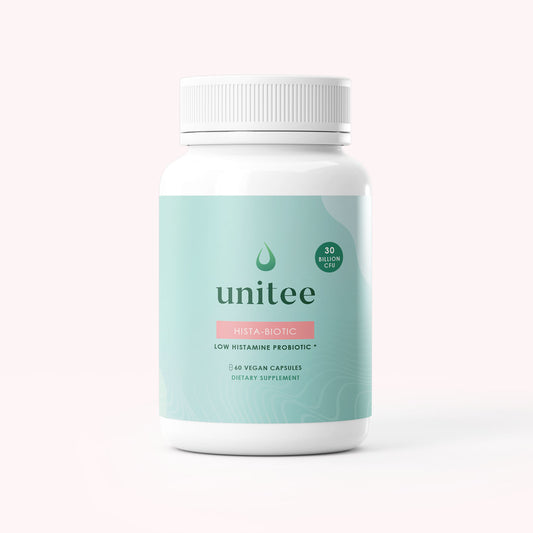Histamine intolerance and COVID-19
We’re living in a time of real uncertainty with the worldwide spread of COVID-19 (coronavirus) and anxiety levels are either high, or people are living in absolute denial about its impact.
The most important thing is to remain calm and clear-headed in situations such as these, and listen to good quality, sound healthcare advice, based on evidence collected by scientists.
And, although my emails have been blowing up with requests to collaborate on coronavirus research projects or provide healthcare strategies to the public for boosting the immune system, I wanted to first take the time to give that information directly to the faithful readers of my own blog.
Especially considering that here, we deal with histamine intolerance as the focus. Many of you are histamine intolerant, many of you have a compromised immune system and many of you are already dealing with the symptoms of a chronic disorder. So, the fears surrounding this situation and the potential consequences, certainly aren't helping.
If you have any concerns or worries about the implications of infection while living with histamine intolerance, I'm here to help you with as much information as I can.
It is, however, extremely important to note that, because this form of the coronavirus is classified as a new strain of virus, there is limited scientific evidence available on its precise mode of action and infection.
That being said, what I discuss in the article below is based on what we know so far and the importance of protecting yourself while managing your histamine intolerance.
Coronavirus: known ways to protect yourself
First, I want to reiterate one important point...
This is one of the most important things you can do
Think back to your childhood for a minute. At school, it was common for bugs to be rapidly spread from one child to the next. It wasn’t long before children throughout the school were displaying the same symptoms.
Why? Let me explain.
Children are always in contact with one another; if they’re not sharing their lunches, they’re using one another’s stationary, playing with toys that other children have been playing with, and generally getting down and dirty while going about their everyday lives.
Of course, young children don’t always consider washing their hands.
As an adult, we can equate these child-like behaviours to things we do every day. We work in close contact, we may still share stationary, desk space or equipment, we have lunch together and share utensils in communal kitchens or canteens, and we touch surfaces that have been touched by thousands of others as they go about their daily lives (think public transport, malls, stores).
Do we wash our hands? Not nearly as often as we should.
That’s why the health authorities have really stressed this point in the media. You’ve likely heard it a million times before, and it’s important you hear it again: a seemingly simple act such as washing your hands can have a significant impact on the spread of germs; not only to others, but to yourself.
Just like good hygiene, keeping your distance from people is important. We don’t want to be touching unnecessarily; you never know who has or who hasn’t washed their hands! It has also been suggested that droplets in the air with mucus from an infected person may increase risk of infection to others - and droplets can be released through talking, laughing, sneezing, coughing.
Now that we've gotten that out of the way, back to histamine intolerance and COVID-19....
Histamine intolerance, COVID-19 and the immune system
There are a number of factors to consider when we’re looking at the immune system in someone living with histamine intolerance:
- The branches of the immune system
- The current state of the immune system and inflammatory responses in someone with histamine intolerance of mast cell activation syndrome (MCAS)
- The release of inflammatory cytokines induced by both histamine intolerance and COVID-19
Firstly, let’s discuss the branches of the immune system, of which there are two.
We have a Th1 and Th2 branch, the former is the one we are born with, called the innate immune system, and the latter, the one we acquire as a result of our environment and exposure to specific foreign invaders, is called the adaptive immune system.
The Th1 immune response plays a critical role in how the Th2 immune branch responds to viral infections.
Take measles, for example. It’s the response of the Th2 branch that provides us with lifelong protection against these types of contagious diseases.
If you’ve had measles before, you won’t get it again because of the way your adaptive immune system built up protective mechanisms against it ever being able to cause a problem again.
Histamine actually regulates this branch of the immune system through various cells involved in its processes. The cells, such as T-cells, have histamine receptors on their surface, and they are also able to secrete histamines(1).
Information about COVID-19 and its effect on T-cells and other immune mechanisms is still being studied, but the most recent and similar outbreak of a coronavirus, namely that of the SARS-CoV in 2003, may offer some insight.
It’s a complex series of mechanisms, but the basics of the severity of infection rely on the virus to be able to suppress or inhibit the immune response and low T-cell response because of it.
An interesting parallel between the SARS-CoV and COVID-19 is what happens in infected children, based on this T-cell idea. It appears that adolescents have a far higher immunity to the disease than adults.
Children may be carriers of the disease, but currently, largely seem to display very mild symptoms or even none at all(2).
One of the reasons scientists suspect this is the case is that children have a far higher T-cell immune response. Their T-cells may still be adapting to their environment, and so their immune system is able to ‘pick up’ the virus and contain it more readily than an adult, who may have more inactive T-cells because of an ageing immune system. This reduced capacity of the immune system to respond may leave an individual at greater risk of developing symptoms when infected(3).
Another consideration is the simple response of the immune system to a viral infection.
If some of the processes involved in the activation of these immune system branches are delayed, which may happen as a result of an infection such as that by the coronavirus, the virus is in a more favourable environment to be able to replicate(4).
A higher rate of replication induces hyperinflammatory conditions and there is a higher influx of inflammatory chemicals into the site of infection, namely the lungs in COVID-19. The ability of the virus to dampen a person’s response is closely associated with disease severity(4).
Secondly, we need to consider how histamine intolerance or mast cell activation syndrome (MCAS) influences the immune system and subsequent inflammatory responses.
When you’re living with histamine intolerance, your immune system is on high alert. With a highly active immune system comes more active mast cells.
Mast cells, as you well know, are a major source of histamines in the body; when we further look at higher histamine levels, we know that histamines can also trigger mast cells to release their contents, which amongst many other chemicals, includes specific inflammatory chemicals, called cytokines(5).
Now for the third point, and getting into the role of cytokines…
A consideration for those with histamine intolerance and COVID-19 infection
Histamines are considered potent inflammatory mediators and when the histamine pathways are stimulated, there is an amplification of inflammatory reactions and cytokine release at the sites where the histamines are most common; one of them being the tissues in the lungs(6,7).
Current information we have on what happens with COVID-19 is that it, too, has an effect on the body’s inflammatory response and, as a result, triggers the release of cytokines.
One of the ways in which it is suspected that COVID-19 causes damage to the lung tissue is through this very mechanism, with high release of levels of inflammatory chemicals, including cytokines, within the lungs.
This is in no way intended to be alarmist, however, it is a valid concern for those living with active histamine intolerance or MCAS, and in particular, if you have the manifestations of your condition in the lungs, namely, asthma, or any breathing-related symptoms.
Having this information on hand also helps you in two main ways:
- You have a clear reason to take the advice of the health advisory boards and follow it as closely as possible, maintaining proper hygiene and social distancing/isolation.
- Should you need to be tested for COVID-19 due to a suspected infection, know that you should make it clear on your intake/questionnaire that you are at a higher risk. Here are a number of ways you can clearly state this during assessment. Tell your healthcare provider or the nurse who is assessing you that you have:
- An inflammatory condition - use the words mast cell activation, histamine toxicity, or histamine disease to describe it rather than histamine intolerance in this case, as many doctors may be unfamiliar with the disorder.
- Episodes of asthma
- A respiratory illness or condition
There is also a lot you can do to continue to manage your body’s immune and inflammatory responses during this time:
- Stick to your low histamine diet as much as possible. Include healthy, anti-inflammatory foods into every meal. I've linked the histamine intolerance foods list for your reference.
- Continue with your current supplements. Order your new stock before you usually would as there may be delays in shipping due to high demand. I have also seen multiple supplements going 'out of stock' and websites putting purchasing caps on people to prevent supplement-hoarding. Keep in mind, everyone is concerned about their health right now - there is no need to panic and hoard every supplement out there, but simply to be sure you're stocked on the supplements you need for supporting your condition.
- Manage stress and anxiety. If you’re home-bound, take this time to relax, meditate, journal! Do anything you can to keep your mind calm and clear. There are plenty of free apps and channels to meditate, follow a yoga flow or do a home-workout. Now is the time to use these resources.
- Stay positive. Continue with hobbies, connect with loved ones over the airwaves and try to keep your spirits high. Check on your friends. Be sure everyone in your network is alright, as well. Some individuals may find the isolation very challenging.
- Ask for help. Community is what comes together in times of crisis; ask friends or neighbours to assist with groceries if you have limited access to stores or online options.
- Do what you can to reduce your risk of infection. Wash your hands for a little longer, wash them more often than you would, and stay home where you can! If you do your part, there’s a much higher chance of there being faster containment, and a return to our day-to-day lives.
One last thing to remember is that, although now is the time everyone is worried about their health and social distancing is in place, we must also come together with our capacity to care for one another and provide support for those around us.
Some people may find isolation mentally challenging, or not be ale to go to the grocery store for supplies at all. Our loved ones may be lonely and afraid. Call them, ask them if they need help, lend a hand in any way you can while still staying responsible and keeping yourself safe.
We are all hoping this nightmare will be over soon.
Stay safe!
-
Ferstl, R., et al. Histamine regulation of innate and adaptive immunity. Front Biosci (Landmark Ed). 2012 Jan 1;17:40-53. https://www.ncbi.nlm.nih.gov/pubmed/22201731
-
Liu, W., et al. Detection of Covid-19 in Children in Early January 2020 in Wuhan, China. The New England Journal of Medicine. 2020. https://www.nejm.org/doi/full/10.1056/NEJMc2003717
-
Zhao, J., et al. T Cell Responses Are Required for Protection from Clinical Disease and for Virus Clearance in Severe Acute Respiratory Syndrome Coronavirus-Infected Mice. Journal of Virology. 2010. 8(4): 9318–9325 https://jvi.asm.org/content/84/18/9318.short
-
Prompetchara, E., et al. Immune responses in COVID-19 and potential vaccines: Lessons learned from SARS and MERS epidemic. Asian Pac J Allergy Immunol DOI 10.12932/AP-200220-0772 https://apjai-journal.org/wp-content/uploads/2020/03/AP-200220-0772.pdf
-
Branco, A., et al. Role of Histamine in Modulating the Immune Response and Inflammation. Interplay between Hormones, the Immune System, and Metabolic Disorders. 2018. 9524075 https://www.hindawi.com/journals/mi/2018/9524075/
-
Dunford, P., et al. The histamine H4 receptor mediates allergic airway inflammation by regulating the activation of CD4+ T cells The Journal of Immunology, vol. 176, no. 11, pp. 7062–7070, 2006. https://www.jimmunol.org/content/176/11/7062
-
Thangam, E., et al. The Role of Histamine and Histamine Receptors in Mast Cell-Mediated Allergy and Inflammation: The Hunt for New Therapeutic Targets. Front. Immunol., 13 August 2018. https://www.frontiersin.org/articles/10.3389/fimmu.2018.01873/full

Anita Tee
My name is Anita Tee. I'm a nutritional scientist who specializes in histamine intolerance. I hold a Master of Science in Personalized Nutrition and a Bachelor of Science in Human Biology and Psychology.For the past ten years, I have used my experience in nutritional and medical health sciences to create a scientifically backed, natural approach to healthcare that relies 100% on evidence-based research.As I previously suffered from - and overcame - histamine intolerance, my focus is to increase recognition and expand the available resources and protocols available for resolving this particular disorder. To date, I have helped over 4,000 individuals fully resolve or better manage their histamine intolerance symptoms.







